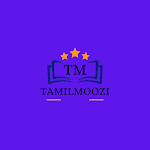Tamil Nadu accounts for 60 per centof leather tanning capacity in India and 38
per cent of all leather footwear, garmentsand components. Hundreds of leather and
tannery facilities are located around Velloreand its nearby towns, such as Ranipet, Amburand Vaniyambadi. The Vellore district is thetop exporter of finished leather goods in thecountry. Chennai also has a large numberof leather product making units involved inexports. There is another clustering of leatherprocessing in Dindigul and Erode. The leatherproducts sector too is a major employment
generatorSivakasi region, once famous for its match industry has now become a major centre for printing and fireworks in the country. It is believed to contribute to 90% of India’s fireworks production, 80% of safety matches and 60% of offset printing solutions.The offset printing industry has a high degree
of specialisation among firms with several of them undertaking just one operation
required for printing. All these industries have their origin in the colonial period and at present offer employment to a large number of workers.Though Tamil Nadu has emerged as a relatively highly industrialised state in the country, the state faces a few issues in sustaining the process. To begin with, some clusters,
especially chemicals, textiles and leather clusters, tend to generate a lot of polluting effluents that affect health. The effluents also pollute water bodies into which effluents are let into and also adjoining agricultural lands.Second, employment generation potential has declined because of use of frontier technologies because of the need to compete globally. Quality of employment also has suffered in recent years as most workers are employed only temporarily.
English education, introduced with theobject of producing clerks, also produced a
new English-educated middle class. This classcame under the influence of western ideas andthoughts. Christianity also had its effect on thenewly emerging middle class. Though small innumber, the educated middle class began to takea lead in political as well as in reform movements.The Indian reformers were, however, quite
hesitant to subject their old notions and habitsto critical scrutiny. Instead they attempted toharmonize both Indian and Western cultures.Their ideas and their actions helped to mitigatesocial evils such as sati, female infanticide, and child marriage and various superstitious beliefs Deeply concerned with the prevailing
customs of sati, child marriage, and polygamy he published tracts against them and petitioned the government to legislate against them. He advocated the rights of widows to remarry. He wanted polygamy to end. He appealed to reason and humanity and compassion of the people.His campaign played a key role in forcing
the Governor-General William Bentinck’s legislation abolishing sati in 1829.Rammohan Roy condemned the subjugation of women and opposed the
prevailing ideas that women were inferior to men. He strongly advocated education
for women. He gave his full support for the introduction of English language and western sciences in schools and colleges. Rammohan Roy founded the Brahmo
Samaj on 20 August 1828. He opened a temple in Calcutta, where there was no image. There he laid down that ‘no religion should be reviled or slightly or contemptuously spoken off oralluded to.’ The Samaj forbade idol-worship
and condemned meaningless religious rites and ceremonies. However, from the beginning, the appeal of the Brahmo Samaj remained limited to the intellectuals and enlightened Bengalis. Though the Samaj failed to attract the people from the lower sections of society, its impact on the culture of modern Bengal and its middle
class was quite significant.
12th Tamil - Half Yearly Exam 2023 - Important Questions - Mr A.Boobathi - Download here







0 கருத்துகள்